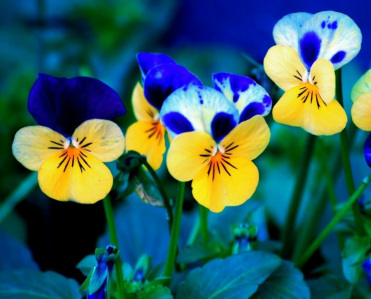 Ayurveda and Seasons - Ritucharya Image - Courtesy wallpaperan.com
Ayurveda and Seasons - Ritucharya Image - Courtesy wallpaperan.com How can you tell that spring is coming?
A simple question that has many answers. Some people will say the climate changes and weather becomes warmer. Some people will say it’s the season of blossoms, lots of flowery fragrances in the surrounding but some will say it’s a season of allergies, with lots of coughing and sneezing. The same season but perceived differently by different people!
And what is the reason? Why is it so?
According to Ayurveda, body constitution or prakruti is of 3 types. Vata, Pitta and Kapha Prakruti. Vata is predominant in cold, dry, light qualities. So vata prakruti person easily notices the increase in the warmth in weather after cold winter.
Pitta is predominant with hot, sharp and light qualities. Pitta prakruti person notices spring as a season of cool breezes, lots of flowery fragrances. Smells of different flowers has a soothing or calming effects hence pitta type person enjoys blossoms.
Lastly, kapha prakruti. Kapha is cold, dense, and moist. In the previous season winter, kapha accumulates in the body. But as winter weather is very cold it remains in dense form but as spring approaches this accumulated kapha starts melting. This increasingly heat liquefies accumulated kapha and person shows signs and symptoms of kapha aggravation. Common signs are cough, cold, sneezing, chest congestion, reduced appetite.
So to avoid this effect of seasonal change a person should follow a seasonal routine. In ayurveda, it is called as ritucharya. Following proper ritucharya helps us to cope up with the stress of the changing season. We can achieve benefits of the changing season.
A simple question that has many answers. Some people will say the climate changes and weather becomes warmer. Some people will say it’s the season of blossoms, lots of flowery fragrances in the surrounding but some will say it’s a season of allergies, with lots of coughing and sneezing. The same season but perceived differently by different people!
And what is the reason? Why is it so?
According to Ayurveda, body constitution or prakruti is of 3 types. Vata, Pitta and Kapha Prakruti. Vata is predominant in cold, dry, light qualities. So vata prakruti person easily notices the increase in the warmth in weather after cold winter.
Pitta is predominant with hot, sharp and light qualities. Pitta prakruti person notices spring as a season of cool breezes, lots of flowery fragrances. Smells of different flowers has a soothing or calming effects hence pitta type person enjoys blossoms.
Lastly, kapha prakruti. Kapha is cold, dense, and moist. In the previous season winter, kapha accumulates in the body. But as winter weather is very cold it remains in dense form but as spring approaches this accumulated kapha starts melting. This increasingly heat liquefies accumulated kapha and person shows signs and symptoms of kapha aggravation. Common signs are cough, cold, sneezing, chest congestion, reduced appetite.
So to avoid this effect of seasonal change a person should follow a seasonal routine. In ayurveda, it is called as ritucharya. Following proper ritucharya helps us to cope up with the stress of the changing season. We can achieve benefits of the changing season.

 RSS Feed
RSS Feed
